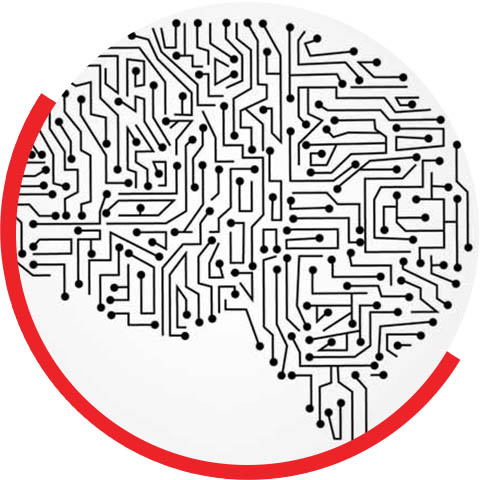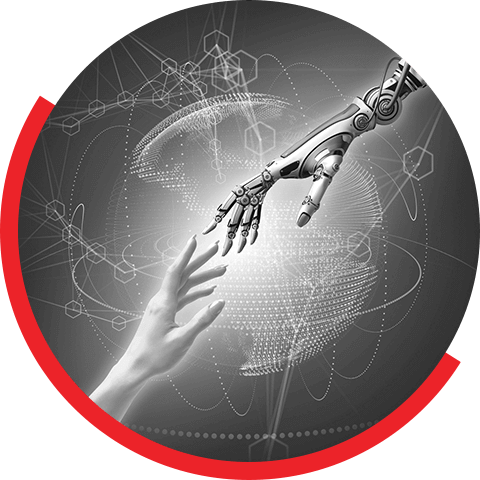Couple of years before when I spoke about Robotic Process Automation (RPA) with one of my prospects, they asked me ‘where the robots are, how they work, if they are battery operated, how they are recharged and lastly how long they can work on a single charge?’ I think we have come a long way past that discussion. Today, prospective customers are well conversed with the RPA concept and many of them have started taking advantage of using them to automate their business processes. Now the question is how to go about and become successful in this journey. I would like to highlight the overall process, challenges in each step and best practices in this blog. I believe that each organization has a commitment to digital transformation and many of them have initiated the digital journey. Digital transformation means different things for different customers, but everyone will agree with me that an essential part of the digital journey is Business Process Automation (BPA). Let’s understand what BPA means to any organization.
Business Process Automation:
- Improves the operational efficiency and productivity
- Saves overall cost and reduces the cost of operation
- Provides greater transparency and consistency
- Streamlines the overall process
- Minimizes manual work and Increases the accuracy
- Provides opportunity for the existing workforce to move from routine/mundane work to customer facing and decision-oriented activities
One may question the need for BPA when we have traditionally used a tool such as Business Process Management (BPM) for the same purpose. There is nothing wrong with BPM; howeverthe scope is much larger, expensive and it takes a considerably longer time to implement. RPA can complement BPM in the journey of BPA. I believe that RPA is a means to BPM and fits well into the BPM culture of an organization. The actual benefits for RPA depends on the process and industry where it is being implemented. However, there are common benefits across all industries and processes.
Speed, Efficiency and Productivity – RPA is changing the way the business and business models are working today. It can speed up existing processes, and integrate with multiple technology systems in a non-invasive way, thereby increasing productivity.
Cost Effectiveness – Digital Robots operate 24/7 without any vacation except during the system maintenance or outage. Robots require monitoring as opposed to supervision. It requires minimal maintenance.
Better Accuracy & Quality – RPA automates business processes which havea probability of human error. Robots can work tirelessly and reduce re-work. Robots provide the highest level of consistency across each process all the time. This improves better output quality.
Enhanced Customer Experience – Bots can complete a large amount of routine/mundane work in a relatively short timeframe. It also frees up human resources to facilitate better customer interaction. Faster processing coupled with accuracy and increased customer interaction enhances customer satisfaction significantly.
Flexibility and Scalability – Recruiting, training, motivating, managing and retaininga human resource is a continuous and costly affair. Robots can easily be scaled up or down for a given process without any major hassles.
Versatility – RPA has the capability to work across industries to perform different tasks for a variety of processes.
Non-Invasive – RPA robots work likehuman beings and carry out same activities on same applications. RPA does not require any changes to the existing application and integrates seamlesslywith systems without any changes to the same.
Better Return on ROI – It is not easy to calculate the ROI for RPA,as it brings variousintangible benefits along with ROI benefits on the project cost & license cost vs. labor replacement. However, the aboveROI benefits would be significant for any RPA program. The maximum ROI comes when a CoE for RPA is established.
Constraints of Implementing RPA. Though RPA brings lot of benefits to process automation, there are few constraints which organizations need to take in its stride in pursuit of digital transformation:
- Initial Cost – The license cost of the RPA toolcoupled with engineering expense spent on RPA, means a few organizations are resistant to the changes consistent with embarking on the journey of RPA.
- Change Management – Adapting the new technology will result in changes in existing processes or Standard Operating Procedures (SOP).Enterprises need to work with the technical teams to ensure that the impact is smoothly handled.Our advice for any RPA implementation is to take it slow and have both existing and RPA processes side by side until confidence is gained before moving to the next stage.
- Workforce Displacement – RPA will result in the workforce being displaced from their current repetitive work to other activities.This requires to be carefully managed in terms of cross-skilling, motivation and educating the workforce on benefits of movement, before embarking on the RPA journey.
Identification of a Use Case
The success of a RPA program relies on the identification of the right use case. Based on our experience, we can provide a fewguidelines to choose the right one and we would advisecompanies to start the journey with a simple use case and subsequently move to more complex use cases.
- Repetitive and Manual – A process that is repetitive in nature across applications (done manually) would be an ideal candidate for the RPA use case.
- Volume – It is important to identify the number of times the same process is recurs per unit of time, which would identify the current amount of human effort being spent on accomplishing that task (use cases). This would be a key factor in selecting the use case.
- Rule-based – For a use case or process, there would be business rules which need to be followed.If these rules are documented, then automating this business process using RPA would be the ideal candidate to start with.
- Structured Document –It is wise to start with a structured document vs. un-structured text for RPA use case. RPA uses NLP and OCR techniquesusing whichunstructured can also be processed, however our advice would be to start with structured and then move to unstructured.
- Error-prone – Ideally a use casewhere there is precedence of manual errors, can be the right choice for RPA robots. Manual mistakes can cause difficulties in regularity compliance besides customer dissatisfaction. The accuracy and unbiasedness would be an advantage for RPA
- Mature and Stable System – A process(use case)or application which undergoes frequent changes would not be an ideal candidatefor RPA. A stable system would beideal for RPA implementation.
- Revenue – Identifying a use case or process whose ROI or revenue can be easily computed, would be an ideal candidate for RPA to create a quick impact.
- Irregular Demand – Any process (use cases) that requires ramp up and down of human individuals to support it, would be a good candidate for RPA, as RPA bots can be scaled up or down based on the demand cycle.Also, aspects of induction, training, attrition would not be there like it is, in human workforce.
- New System Roadmap – Any process or system that is likely to change in near future may not be the right candidate for RPA.
- Data Privacy – The management team has toensure that all necessary approval/permission are obtained for theRPA bot, as it would behave like a human in terms of accessing data and writing data back from multiple systems for processing.
Post identification of the usecase, the next challenge is to convince the management and impacted parties before starting on the RPA journey.
Management Buy-in – The management needs to understand the following besides theexpected ROI from the implementation of RPA:
- How will the work process change?
- What would be the new skill requirement for the organization?
- What would be the impact on the existing workforce?
- What would be the customer impact?
- What is the time frame required for the implementation?
Once a process is identified for RPA, the team should prepare the document to outline each of the above. Now, the cost benefit analysis and ROI is to be calculated before making the presentation to the management for acceptance.
Impacted Team – It is essential to have an honest, open and candid discussion with the team about how RPA will affect them and what changes it will bring to the organization and processes. It would be helpful for smooth implementation.
- The supervisor or the team in charge needs to be taken to confidence about the benefits of RPA, and how the existing team can be better utilized needs to be explained, so that he/she can convince other team members.
- A plan for training of the new team members (selected) is to be prepared.
- An up-skill plan needs to be prepared for the redundant team members and their next assignment to be finalized well in advance.
- HR team needs to be used to take care of emotional and motivational aspects related to the current employees, so as to not be detrimental for a successful RPA implementation.
The next step is to choose the right Partner and Tool Selection
The selection of the RPA tool and a reliable partner are two most important actions in the intelligent automation journey of any organization. Today, we have several leading product vendors who claim to have the best features in the field of RPA. However,many business houses still struggle to choose the right product for their needs.Most of the leading RPA product vendors claim to fit all sizes. I therefore think, that it is a difficult task to choose the right product and the partner. Based on our years of experience working with multiple RPA tools, starting from selection to successful deployment, we believe that a set of criteria may be useful for an organization to finalize the best tool for RPA initiatives.
Architecture – There are three different types of robots that exist today. The assisted, unassisted and Hybrid. These digital robots are deployed both at front-end and back-end automation. The design and structure of the tool have implications for how and where it can be used. The adaptability and efficiency of the product’s architectural and functional capability to meet your requirements would be key in the selection process of the RPA tool. The other consideration would be an enterprise vs. non-enterprise level tool.
Ease of Use - Ease of use can play a big role in selecting the right tool. It should be flexible to accommodate basic process automation with built-in features. Better usability will lead to quicker growth, greater ease of deployment and higher levels of adoption. Lastly, the benefitis proportionality with the ease of use. The tool should be easily configurable and manageable by business users. It should have a quick learning curve and ensures a great level of reusability features that determine the ease and speed of the implementation.
Scalability – Organizations are operating with on-premises, Cloud and hybrid models. It would be wise to choose an RPA partner who can provide a solution both, for on-premises and Cloud. In selecting a tool, both, infrastructure and operational scalability are important. The tool can be adjusted on-demand and be allowed to execute multiple workflows. Organization can start with a small pilot and scale in a cost- effective way.
Reliability – This is an important criterion to select the right tool. The automation framework based in the tool that is built, should be robust and very reliable. The tool should be able to handle different types of use cases and high volume of data without degrading the performance or service level.
Flexibility –Identify the customizations required for the organization after going through the demonstration of tool features. The cost and elapsed time of these customizations need to be discussed with the product vendor during the product evaluation stage. The organization needs to make sure the RPA product works across multiple operating systems.
Security –Robotic Process Automation is going to process sensitive data of an organization, and therefore the right kind of security control should be an essential part of the selection criteria.
Integration -In most of the cases, RPA tools need to interact with multiple systems in an organization. The ease of integration with other systems would be another selection criterion for the right RPA tool for an organization.
Technology Spectrum –RPA tools come with OCR and some level of cognitive capabilities. One should look at the tools’ ability to take advantages of futuristic technologies like AI/ML and Chatbots etc. This may not be the current requirement for an organization, but it would be worth to have a look into the technology landscape from the point of view of investment and new technologies.
Governance and Visibility –An organization’s RPA strategy should include the Governance, Operating Model, Organization Structure and Change Management process. Management and governance of various bots should be visible to all intended members through dashboards. A mechanism must be in place in case of malfunction.
Vendor Support and Documentation –The product maturity andPartner’s ability to support each customer’s needs, would be one of the primary factors while selecting a Partner to employ the RPA tool. RPA is a journey and the regular interaction with the Partner is important. A matured support organization along with theavailability of right documentation both online and offline, will help faster deployment and reduce maintenance time to a greater extent.
‘Path to Success with RPA’ -Once an organization chooses the right RPA partner and the tool, the next step is to execute the first use case successfully. The organization along with partner should create a work plan for the execution and should be ready with the infrastructure and right resources ahead of it. This process will showcase the strength of RPA, as well as its pitfalls. This step will establish the framework and the operational models for a smooth transition into the long-term RPA strategy.
The initiative to implement RPA is more business-driven than IT. RPA will take over certain manual processes which were repetitive, manually intensive, voluminous, time consuming, and error prone. Each step of the RPA implementation process should be clearly communicated to each affected employee for smooth transition and reduce the margin of errors. RPA is a very powerful transformational tool which can improve efficiency, productivity, and make the organization more competitive in the marketplace. It has a potential to improve end-customer satisfaction significantly.








